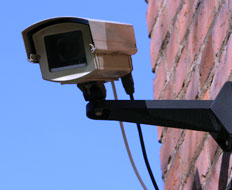Traditionally, when quick serves plan security strategies, they address three main industry challenges: prevent shrinkage, guard against in-store and drive-thru robbery, and protect the company from fraudulent lawsuits. Operators need to carefully examine security solutions that will provide the greatest visibility into store activities and will hold up in court. However, quick serves should not pass up the opportunity to simultaneously boost sales by leveraging analytics tied to surveillance systems data. Leveraging data analytics collected by surveillance systems enable operators to improve employee training and increase the success of targeted marketing campaigns, thereby driving sales margins while also maintaining security protection.
Safety and security considerations
The foodservice industry operates on tight margins; therefore, it is extremely important for quick-service managers to protect against lost revenue due to theft or internal shrinkage (employee theft), which can have a huge impact on the bottom line and greatly hinder the success of quick-serve businesses. The National Restaurant Association estimates that employee theft accounts for nearly 75 percent of restaurant industry losses, or approximately 4 percent of annual sales. One way to guard against internal theft is to integrate Internet Protocol (IP) surveillance cameras with POS systems. Through this integration, managers can compare real-time videos with collected POS data to ensure employees are properly following close-out transaction procedures. Managers can also search directly for high-risk transactions, such as refunds and no sales, and compare against recorded footage for accuracy.
Quick serves, like convenience stores, are high-risk businesses when it comes to robbery. They are often located near freeways creating multiple, easy escape routes for robbers. Additionally, many quick serves have implemented late-night or 24-hour schedules, which can result in an increased security risk. While each security plan differs slightly by restaurant, the industry as a whole has begun transitioning from analog to IP surveillance systems. Compared with traditional analog monitoring, IP technology provides operators with multipoint remote access to live streaming or recorded footage via Internet-connected computers or mobile devices from virtually anywhere. With reductions in staff, IT managers can monitor multiple store locations from a central location on a single device and communicate necessary adjustments to on-site store managers.
According to CNA Insurance, 57 percent of all foodservice general liability insurance claims are slip-and-fall incidents. In the event of a fraudulent lawsuit, security and video surveillance can become extremely important evidence to disprove false claims. To guard against fraudulent lawsuits that can cause a business millions of dollars in settlement fees, managers should select IP cameras with superior image quality that are able to capture a clear image in a variety of lighting conditions, from sunny, outdoor tables to dimly-lit drive thrus. Additionally, quick-service managers should position security cameras to properly monitor all staff and customer areas of the restaurant.
Applications to enhance ROI
Security systems can also improve employee training. Using certain camera placements, IP surveillance technology allows managers to view and hear employees’ interactions with customers, as well as their POS screen inputs. Employee monitoring is especially relevant after initial hires, new system upgrades, or during times of special discounts/promotions. This capability allows managers to ensure customer service and employee productivity protocols are being met. When areas for improvement are identified, store managers can revisit this part of training with employees to ensure the issues are addressed and fixed in a timely manner.
While integrated security solutions help quick serves secure assets and maintain their bottom line, recent advances in facial matching technology and analytics can enable sale increases due to targeted marketing. When connected with cameras and digital signage, restaurants can leverage facial matching technology to collect demographics of anonymous customers. This technology enables them to promote items of high interest—such as salads or hamburgers—through real-time menuboard customization using customer demographic data, such as gender and age range. Quick serves can track all this data to measure the success of campaigns targeted to certain demographics.
It is important for quick-service operators to future proof security investments and deploy technology that can be used beyond traditional safety and loss prevention functions. IT staff can easily make the case to managers and franchise owners for integrated technologies that offer data analytics. Employee training and targeted marketing capabilities will drive new levels of return on investment (ROI) and create buy in across job functions.












